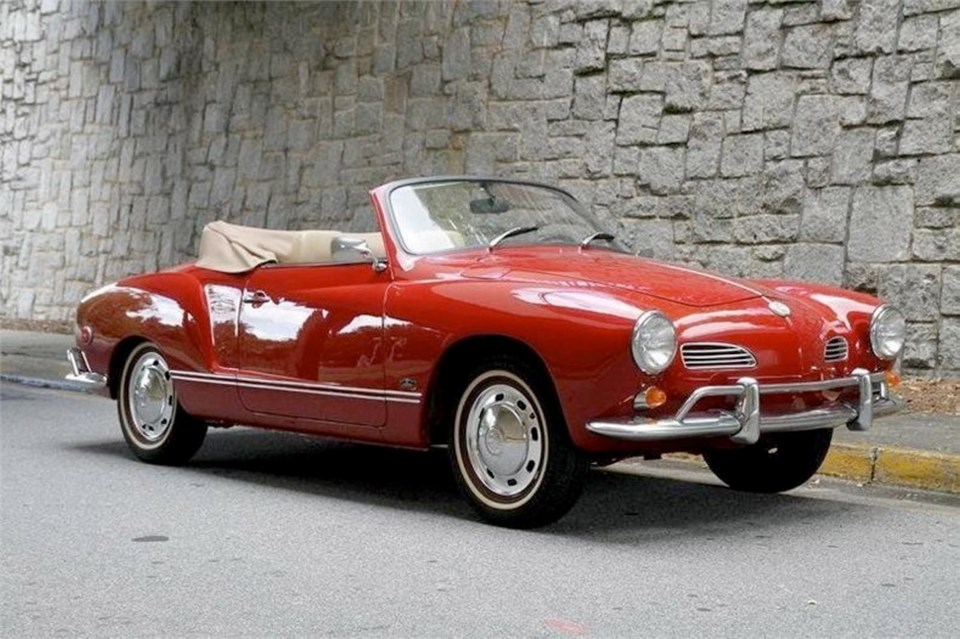The Volkswagen Beetle was designed as a utilitarian little sedan with a shape dictated by aerodynamics and practicality, not esthetics. No one ever accused it of being beautiful ŌĆö cute perhaps, in a reverse snobbery kind of way, but not beautiful.
There were lots of suggestions for improvement. Through the 1950s and 1960s automotive enthusiast magazines often carried renderings of restyled Beetles with larger trunks, bigger windows and flowing integrated bodies.
But Heinrich (Heinz) Nordhoff, general manager of the huge Volkswagenwerk in Wolfsburg, Germany, that had risen from the ashes of the Second World War, was unmoved. He kept right on building the little bug-shaped car conceived by Dr. Ferdinand PorscheŌĆÖs design office in the 1930s.
And with sound mechanicals and good fuel economy, customers the world over kept buying them. When production of the original Beetle finally end in Mexico in 2003, about 22 million had been built.
Although nothing was going to budge Nordhoff from the beloved Beetle, Volkswagen eventually surprised everyone by complementing it with a lovely swan called the Karmann-Ghia. It was styled by the Ghia studio of Italy and built by coachbuilder Karmann of Osnabruck, Germany, builder of Volkswagen cabriolets.
The Volkswagen Karmann-Ghia was introduced late in 1955 as a 1956 model, a two-passenger coupe with cargo space limited to a fold-down shelf behind the seat, supplemented by a small underhood trunk. A convertible came a year later.
While the Karmann Ghia was universally hailed as handsome, it was not a sports car, nor did it aspire to be one. It didnŌĆÖt even have a tachometer. Under that stylish new body lurked the same robust Beetle 1.2-litre (1,192 cc) 36 horsepower, air cooled, overhead valve flat four driving through the same four-speed manual transmission with an engine-saving overdrive fourth gear. Suspension was the BeetleŌĆÖs usual four-wheel independent with laminated front and solid rear torsion bars.
The sleeker body made the K-G 170 mm (6.7 in.) lower, 86.3 mm (3.4 in.) wider and 76 mm (3.0 in.) longer than the Beetle. It had the same 2,400 mm (94.5 in.) wheelbase, and at 798 kg (1,760 lb) it was 54.4 kg (120 lb) heavier.
While the Beetle was universally lauded for its durability and economy, it was not known for its performance. Although a slick shifting transmission and precise steering made it feel faster than it was, zero to 97 k/h (60 mph) in 28 seconds and top speed of 113 km/h (70 mph) was definitely not quick.
Since the K-G shared BeetleŌĆÖs running gear, it shared its performance with small variations due to weight and styling. The heavier K-G took 28.8 seconds to reach 97 (60) (R&T 4/56) compared with the BeetleŌĆÖs 28.0.
The K-GŌĆÖs superior aerodynamics gave it a 122 km/h (76 mph) top speed compared with the BeetleŌĆÖs 113 (70). And as with the Beetle, the ownerŌĆÖs manual said the K-GŌĆÖs top speed was its cruising speed, a feature that set Volkswagen apart from other small cars of the day. It was a capability bred on GermanyŌĆÖs autobahns and much appreciated by North American drivers.
For that smooth Italian styling, Karmann-built body and more luxuriously appointed interior, K-G buyers paid a premium of about $1,000 more than the Beetle, a significant difference when the Beetle was about $1,700. But this didnŌĆÖt seem to deter customers willing to wait months for delivery of new K-Gs.
The K-G had a long run from 1956 to 1974. Over the years, its styling changed only slightly, the most significant being lengthening and raising the front fenders in 1958 for a slightly sleeker appearance.
It received the same mechanical upgrades as the Beetle and by its last year, the engine had been increased to 1.6 litres (1,584 cc) and 60 horsepower. This brought its zero to 97 km/h (60 mph) down to 17.5 seconds and top speed up to 148 km/h (92 mph).
When production of the Karmann-Ghia ended in 1974, 443,000, including 81,000 convertibles, would be built over the 19-year period.
The K-G was replaced by the front engine, front-wheel drive Volkswagen Scirocco which was superior in every way. It was faster, handled better and had a folding rear seat and big hatchback that gave it vastly more luggage space. And it carried a family-friendly four passengers.
The VW K-GŌĆÖs role was to add a little glamour to the Volkswagen lineup, a job it fulfilled admirably. It never aspired to be a sports car, although some intrepid souls did hop them up or install Porsche engines. It was an affordable, stylish two-passenger sporty car with adequate performance, outstanding durability and good fuel economy.
Karmann-Ghias are gaining popularity as collectibles. They still generally remain within the means of someone who wants sound, basic German engineering wrapped in elegant Italian styling.



